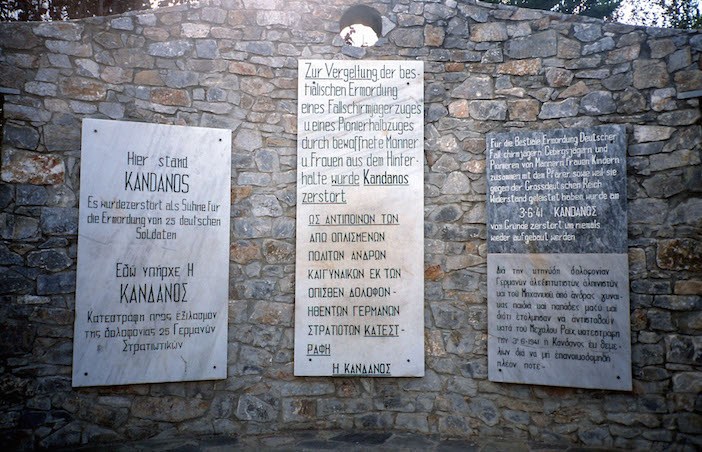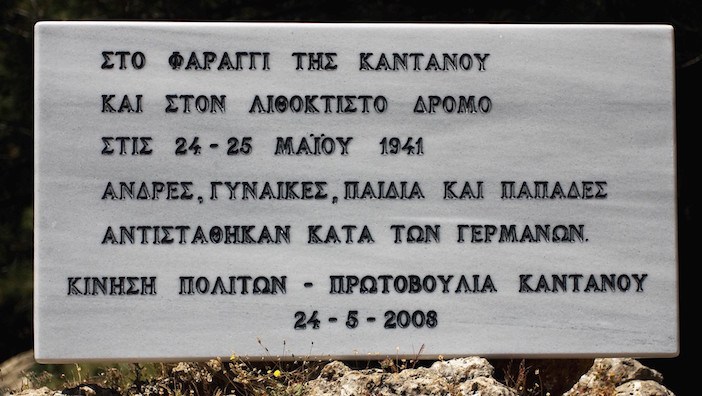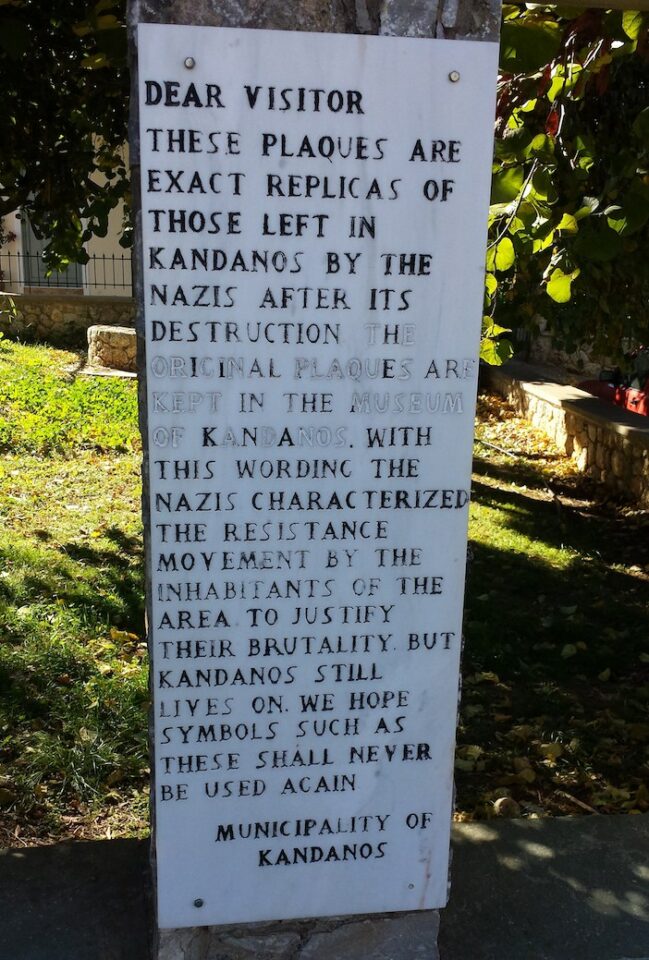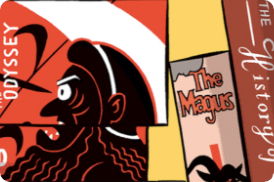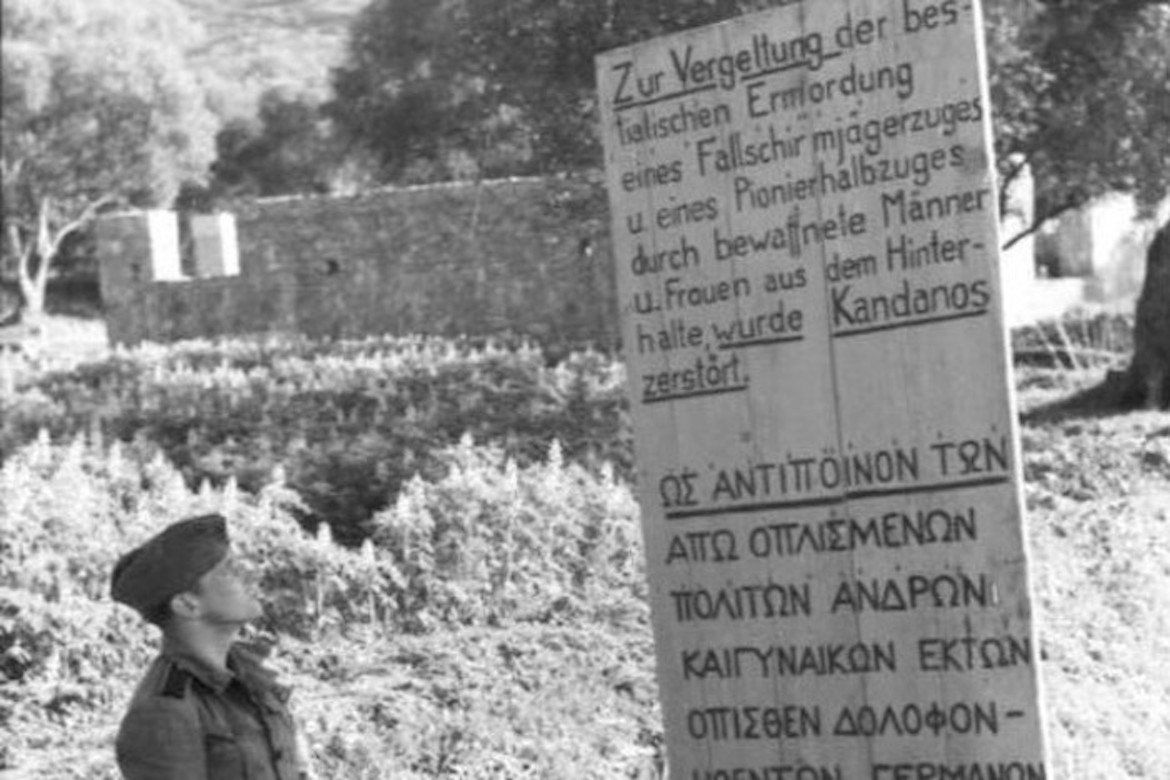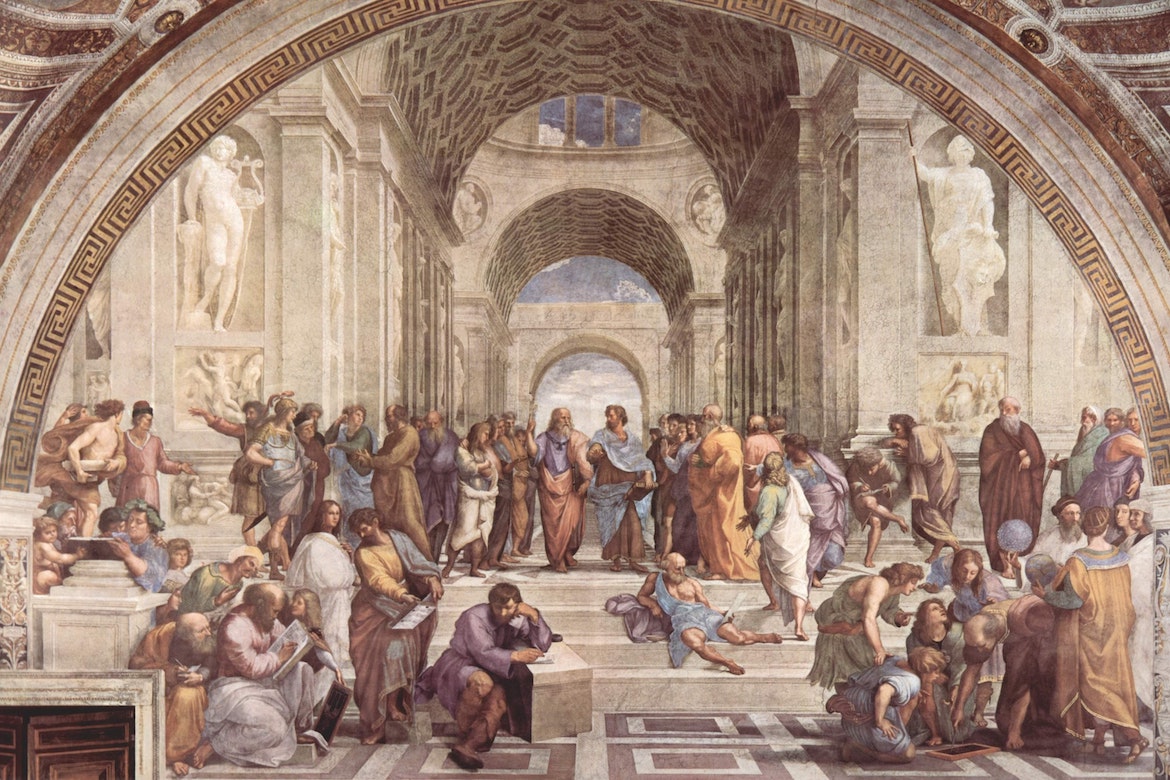The answer: Complete annihilation of their village and the massacre of 180 innocent Cretan civilians.
The razing of the village of Kandanos was one of the most atrocious war crimes committed during the Nazi German occupation of Crete in World War II.
The complete destruction of the Cretan village and subsequent massacre was ordered on June 3, 1941 by Nazi commander Kurt Student, who aimed to punish the local population for participating in the Battle of Crete and delaying the Germans’ advance for two days.
The battle had started on May 20 with a large-scale airborne invasion to capture the island’s strategic locations. Kandanos had been bombed during the first days and a small German force attempted to move through it on May 23 in order to reach and secure Paleochora — another town located to the south.
Untrained and insufficiently armed, local civilians from Kandanos, Paleochora and nearby villages spontaneously confronted and fought the German force. On the following day, the locals gathered in larger numbers and set an ambush for the advancing German troops at Kandanos’ gorge.
Despite strong resistance on May 24 and 25 and their limited casualties, the locals were vastly outnumbered and eventually forced to retreat into the mountains, letting the Germans advance towards Paleochora.
The unprecedented resistance from the local population exasperated the Nazis’ Prussian sense of military order which mandated that no one but professional warriors be allowed to fight.
Even before the end of the battle, exaggerated stories had started to circulate, attributing the excessively high German paratrooper casualties to torture and mutilation by the Cretans.
Such stories proved to be false later on, as more careful investigations could identify only a few cases of mutilation all over Crete — most of which had been inflicted after death.
Nevertheless, as a result of the said allegations and seeking to set an example after the Cretan surrender on May 31, temporary commander General Kurt Student issued an order for launching a wave of brutal reprisals against the local population. The reprisals were to be carried out rapidly by the same units who had been confronted by the locals, omitting formalities.
The Germans killed about 180 residents and slaughtered all livestock in and around Kandanos; all houses were torched and razed. Nearby villages such as Floria and Kakopetro met a similar fate. After its destruction, Kandanos was declared a “dead zone” and its remaining population was forbidden to return to the village and rebuild it.
Finally, inscriptions in German and Greek were erected on each entry of the village. One of them read: “Here stood Kandanos, destroyed in retribution for the murder of 25 German soldiers, never to be rebuilt again.”

After Germany surrendered, General Kurt Student was captured by the British. In May 1947, he came before a military tribunal to answer charges of mistreatment and murder of prisoners of war by his forces in Crete.
Greece’s demand to have Student extradited was declined. Student was found guilty of three out of eight charges and sentenced to five years in prison. However, he was given a medical discharge and was released in 1948. Student was never tried for crimes against civilians.
Today, Kandanos has been rebuilt. Reproductions of the somber Wehrmacht signposts commemorating the destruction of the village are displayed on a local war memorial.
